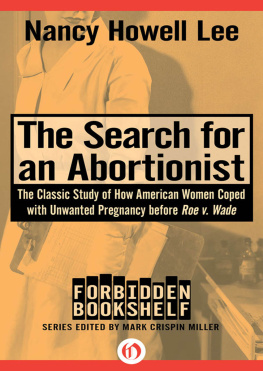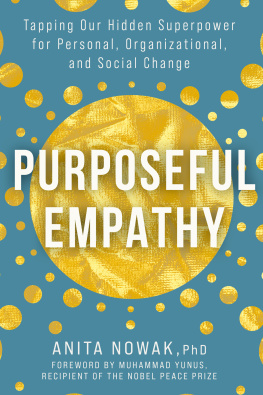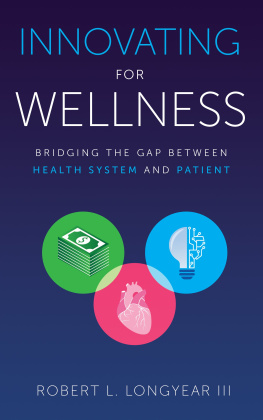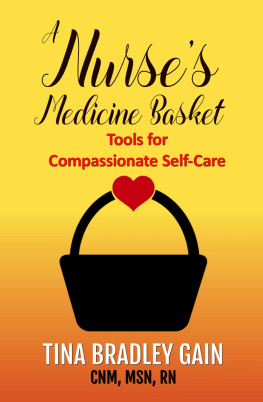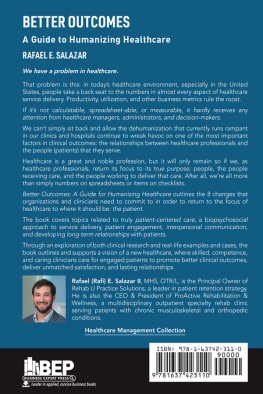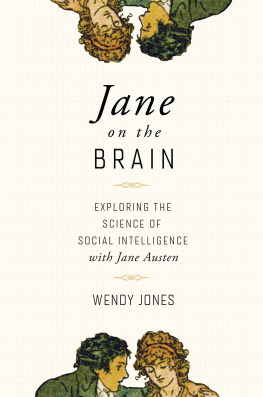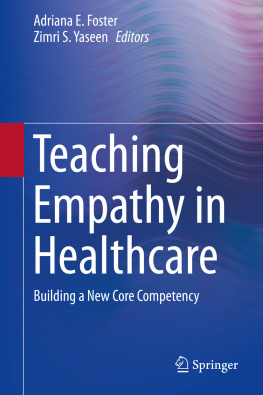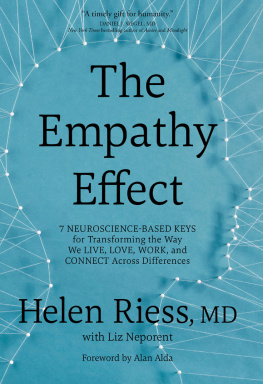Copyright 2016 by Thomas H. Lee, MD. All rights reserved. Except as permitted under the United States Copyright Act of 1976, no part of this publication may be reproduced or distributed in any form or by any means, or stored in a data base or retrieval system, without the prior written permission of the publisher.
ISBN: 978-1-25-958631-6
MHID: 1-25-958631-6
The material in this eBook also appears in the print version of this title: ISBN: 978-1-25-958301-8, MHID: 1-25-958301-5.
eBook conversion by codeMantra
Version 1.0
All trademarks are trademarks of their respective owners. Rather than put a trademark symbol after every occurrence of a trademarked name, we use names in an editorial fashion only, and to the benefit of the trademark owner, with no intention of infringement of the trademark. Where such designations appear in this book, they have been printed with initial caps.
McGraw-Hill Education eBooks are available at special quantity discounts to use as premiums and sales promotions or for use in corporate training programs. To contact a representative, please visit the Contact Us page at www.mhprofessional.com.
TERMS OF USE
This is a copyrighted work and McGraw-Hill Education and its licensors reserve all rights in and to the work. Use of this work is subject to these terms. Except as permitted under the Copyright Act of 1976 and the right to store and retrieve one copy of the work, you may not decompile, disassemble, reverse engineer, reproduce, modify, create derivative works based upon, transmit, distribute, disseminate, sell, publish or sublicense the work or any part of it without McGraw-Hill Educations prior consent. You may use the work for your own noncommercial and personal use; any other use of the work is strictly prohibited. Your right to use the work may be terminated if you fail to comply with these terms.
THE WORK IS PROVIDED AS IS. McGRAW-HILL EDUCATION AND ITS LICENSORS MAKE NO GUARANTEES OR WARRANTIES AS TO THE ACCURACY, ADEQUACY OR COMPLETENESS OF OR RESULTS TO BE OBTAINED FROM USING THE WORK, INCLUDING ANY INFORMATION THAT CAN BE ACCESSED THROUGH THE WORK VIA HYPERLINK OR OTHERWISE, AND EXPRESSLY DISCLAIM ANY WARRANTY, EXPRESS OR IMPLIED, INCLUDING BUT NOT LIMITED TO IMPLIED WARRANTIES OF MERCHANTABILITY OR FITNESS FOR A PARTICULAR PURPOSE. McGraw-Hill Education and its licensors do not warrant or guarantee that the functions contained in the work will meet your requirements or that its operation will be uninterrupted or error free. Neither McGraw-Hill Education nor its licensors shall be liable to you or anyone else for any inaccuracy, error or omission, regardless of cause, in the work or for any damages resulting therefrom. McGraw-Hill Education has no responsibility for the content of any information accessed through the work. Under no circumstances shall McGraw-Hill Education and/or its licensors be liable for any indirect, incidental, special, punitive, consequential or similar damages that result from the use of or inability to use the work, even if any of them has been advised of the possibility of such damages. This limitation of liability shall apply to any claim or cause whatsoever whether such claim or cause arises in contract, tort or otherwise.
For Soheyla
Contents

Acknowledgments

I F AN EPIDEMIC of empathy is an idea whose time has come, it is because of the timeliness of the convergence of a series of ideas from various key colleagues. I hope this acknowledgment of their deep influence on this book will also serve as an abbreviated syllabus for readers who might want to go more deeply into some of the themes I have woven together. Individually and collectively, the work of these colleagues provides important insights into healthcares current state and where healthcare should go.
For insight into the nature of strategy in a competitive healthcare marketplace, there is no better place to begin than with the work of Michael E. Porter, my colleague, coauthor, and friend from Harvard Business School. Over the last few decades, Michael has defined the meaning of strategy for business in general. His work on healthcare has helped clarify why an overarching strategic goal is important for every organization and why that goal should be to create value for patients, determine what multidisciplinary teams should look like, and decide what kind of information and incentives those teams need to drive improvement.
For insight into the nature of the overall healthcare marketplace and the dynamics related to real competition (as well as efforts to frustrate competition), I turn to Leemore Dafny, a Kellogg School economist who is perhaps best known for her work on payer and provider consolidation, illustrating how it leads to weaker competition and higher prices. Like many clinicians, I have long been leery of thinking about healthcare as a marketplace, anticipating potentially perverse consequences if patients have to act like consumers and try to make trade-offs between quality and price. But no model of paying for healthcare is perfect, and all those models can have a range of adverse effects. Dafny and some of her economics colleagues inspire confidence that competition in a value-driven market has great potential to drive improvements in quality and efficiency, especially if providers embrace competition and learn to trust market forces. All stakeholders, including providers, will trust market forces more if providers are actively engaged market participants by, for example, being transparent with their quality data. Porters and Dafnys work tell us what we have to do and why we have to do it.
But how to get that work done? University of Chicago sociologist Ronald Burts book on social capital Brokerage and Closure: An Introduction to Social Capital is one that I have given to virtually every colleague working directly with me in managing healthcare delivery. It provides a clear and useful structure for learning (increasing variation in what is done by brokering ideas) and then converging on best practices (closure). Social capital is at least as important as financial capital to the ability of healthcare providers to compete in the era ahead, and corporate boards should give it the lions share of their attention.
No ones name appears more often in this book than that of Nicholas Christakis, the Yale social network scientist whom I met when he was launching his extraordinary work at Harvard. From Nicholas, I have learned how epidemics of values and emotions can spread from person to person to person and how to think of a group of people as an organism. If the work of Porter, Dafny, and Burt defines the big picture, Christakis characterizes the nature of the work to be done closer to the ground.
Then there is the work that is not included in this book and is conspicuous by its absence. By that, I mean the nuts-and-bolts details of the kinds of programs and actions that can improve patients experiences. For those details, I refer readers to the work of my colleague Jim Merlino, former chief experience officer of Cleveland Clinic and author of the widely praised bestselling book Service Fanatics: How to Build Superior Patient Experience the Cleveland Clinic Way.
I also have been deeply influenced by my colleagues at Press Ganey, most notably Deirdre Mylod, who was the first and the most persistent in saying that the reduction of suffering should be the performance goal to be measured and managed, and Christy Dempsey, our chief nursing officer, who defined compassionate connected care as the way to reduce suffering. Pat Ryan became the CEO of the company in 2012 and made these goals the focus of Press Ganey even before talking to me about joining.



